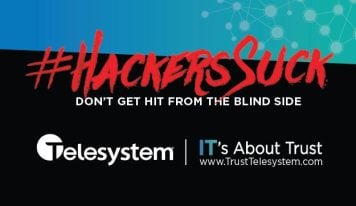Amazon announced it mitigated the largest DDoS attack ever just one week ago. the volume was 2.3 Tbps! Staggering.
/cdn.vox-cdn.com/uploads/chorus_image/image/66950763/msedge_yshEjBDINH.0.jpg)
To put that number into perspective, prior to February of this year, ZDNet notes that the largest DDoS attack recorded was back in March 2018, when NetScout Arbor mitigated a 1.7 Tbps attack. The previous month, GitHub disclosed that it had been hit by an attack with a peak of 1.35 Tbps.
Cybersecurity leader Imperva, Inc., just published its May 2020 Cyber Threat Index Report, revealing seven major application DDoS attacks over the previous month — two of which lasted 5-6 days. Additionally, the team found that 47% of account takeover (ATO) attacks were aimed at loyalty programs and streaming services, where bad actors attempted to use stolen credentials to gain unauthorized access to online accounts to carry out malicious actions such as data theft, identity fraud or fraudulent e-commerce transactions.
The monthly report also showed continued signs of site traffic recovery across various industries following the lift in shelter-in-place orders, as schools across the world reopened and employees returned to workplaces. Key findings between May 1 and May 31, 2020 include:
Increasing length of application DDoS attacks. Imperva Research Labs identified seven major application DDoS attacks over 150,000 requests per second (RPS). Two of the attacks lasted five and six days consecutively — an unusual occurrence, as most (70% of those in May) DDoS attacks typically last less than 24 hours. Additionally, while the average DDoS event in April originated from 300 IPs, these two major events were from 28,000 and 3,000 unique IPs.
Additionally:
- The most targeted industries overall were News (38%), Business (25%) and Financial Services (19%).
- Top countries from which DDoS attacks originate are China (26%), US (15%) and the Philippines (7%).
Finally:

- ATO attacks are focused at loyalty program cards and streaming services. Out of the total ATO attacks, 47% were aimed at loyalty programs and streaming services. In one example, Imperva Research Labs registered 13.5 million ATO attempts over three days. Across all ATO attacks, the average attack size per site was about 100,000 attempts, distributed over 2,000 IPs on average. This means that each IP sent no more than two requests per day, classifying as a “low and slow” attack — where a botnet uses multiple devices, each sending only a handful of requests, to masquerade its attack with legitimate traffic.
- COVID-19 affects cyber traffic and attack trends, while recovery continues. As the coronavirus crisis escalated, Imperva Research Labs previously examined changes in traffic and attack trends across multiple industries and countries. In May, as more countries reopened schools and less students were at home, overall traffic to education sites went down by 20%. Additionally, with many returning to work and spending more time commuting, the use of entertainment sites — specifically radio streaming services — increased by 11% overall.
- Cloud platforms and automated tools are the main source of attacks against government sites in the United States. A total of 65% of the attacks against Law and Government sites in the US originated from cloud platforms using automated tools written in the Python programming language — a finding aligned with Imperva’s recent annual report of the most popular tools amongst hackers.
- Database vulnerabilities spike. Ten new database vulnerabilities were published in May, and almost half held a high severity score of greater than seven, with one reaching a critical score of greater than nine per the Common Vulnerability Scoring System. Most of the vulnerabilities were published on May 12, 2020 as part of SAP Security Patch Day.
- Overall Cyber Threat Index score remains at a ‘high’ level. Although the number of attacks declined by 28%, the Cyber Threat Index score went up by 32 points due to more high- and medium-risk vulnerabilities and an increase in high volume and longer duration DDoS attacks.
“In May, we were surprised to find two unusually long DDoS attacks lasting 5-6 days. As methods to carry out DDoS have become more advanced, leading to increased accessibility to those with no technical skills, we have historically seen that most attackers would rather not waste time and resources on achieving their proof of impact,” said Nadav Avital, head of security research at Imperva. “For example, in Imperva’s 2019 Global DDoS Threat Landscape Report, we found that about 29% of attacks lasted 1-6 hours while 26% lasted less than 10 minutes. Longer attacks — such as the ones conducted in May — suggest they are the work of more professional bad actors who use their own botnets to carry out persistent assaults.”
See the ONLY cybersecurity companies that matter at the ITEXPO #TECHSUPERSHOW. Watch the video below for more.
This Event has been called the BEST SHOW in 5 YEARS and the Best TECHNOLOGY EVENT of 2020.
2020 participants included: Amazon, Cisco, Google, IBM, ClearlyIP, Avaya, Vonage, 8×8, Comcast Business, BlueJeans, CoreDial, Dell, Edify, Epygi, FreeSWITCH, Grandstream, Granite, Intrado, Frontier Business, Fujitsu, Jenne, West, Konftel, Intelisys, Martello, NetSapiens, OOMA, Oracle, OpenVox, Peerless Network, Phone Sentry, Phone.com, Poly, QuestBlue, RingByName, Sangoma, SingTel, SkySwitch, Spracht, Spectrum, Sprint, Tallac, Tech Data, Telarus, TCG, Teledynamics, Teli, Telinta, Telispire, Telstra, TransNexus, Unified Office, Vital PBX, VoIP Supply, Voxbone, VoIP.MS, Windstream, XCALY, XORCOM, Yealink, Yubox, and ZYCOO. Full List.
Join 8K others with $25B+ in IT buying power who plan 2021 budgets! Including 3,500+ resellers!
A unique experience with a collocated Future of Work Expo, SD-WAN Expo, and MSP Expo…
June 22-25, 2021, Miami: Register now and you could win a Tesla on Feb 12th.






